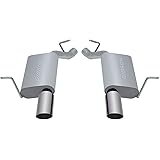Optimize the Cooling System for Better Temperature Management in a Nissan 240Z Series 3===
iOttie Easy One Touch 5 Dashboard & Windshield Universal Car Mount Phone Holder Desk Stand with Suction Cup Base and Telescopic Arm for iPhone, Samsung, Google, Huawei, Nokia, other Smartphones
$11.04 (as of 07/26/2024 05:24 GMT -07:00 - More infoProduct prices and availability are accurate as of the date/time indicated and are subject to change. Any price and availability information displayed on [relevant Amazon Site(s), as applicable] at the time of purchase will apply to the purchase of this product.)Invidia (HS06HC4GTT) N1 Cat-Back Exhaust System with Burnt Blue Titanium Tip for Honda Civic Si Sedan
$577.58 (as of 07/26/2024 05:24 GMT -07:00 - More infoProduct prices and availability are accurate as of the date/time indicated and are subject to change. Any price and availability information displayed on [relevant Amazon Site(s), as applicable] at the time of purchase will apply to the purchase of this product.)Walker SoundFX 18587 Direct Fit Exhaust Muffler 2" Inlet (ID) 2.25" Outlet (OD) for Toyota Tacoma
$70.01 (as of 07/26/2024 05:24 GMT -07:00 - More infoProduct prices and availability are accurate as of the date/time indicated and are subject to change. Any price and availability information displayed on [relevant Amazon Site(s), as applicable] at the time of purchase will apply to the purchase of this product.)K&N Premium Oil Filter: Protects your Engine: Compatible with Select FORD/LINCOLN/TOYOTA/VOLKSWAGEN Vehicle Models (See Product Description for Full List of Compatible Vehicles), HP-1002
$15.99 (as of 07/26/2024 05:24 GMT -07:00 - More infoProduct prices and availability are accurate as of the date/time indicated and are subject to change. Any price and availability information displayed on [relevant Amazon Site(s), as applicable] at the time of purchase will apply to the purchase of this product.)Spectre Performance SPE-46723 46723 7/8" Header Bolt
$13.99 (as of 07/26/2024 05:24 GMT -07:00 - More infoProduct prices and availability are accurate as of the date/time indicated and are subject to change. Any price and availability information displayed on [relevant Amazon Site(s), as applicable] at the time of purchase will apply to the purchase of this product.)Gibson Performance Exhaust 17407 Aluminized Axle Back Exhaust System
$436.39 (as of 07/26/2024 05:24 GMT -07:00 - More infoProduct prices and availability are accurate as of the date/time indicated and are subject to change. Any price and availability information displayed on [relevant Amazon Site(s), as applicable] at the time of purchase will apply to the purchase of this product.)The Nissan 240Z Series 3 is a classic sports car known for its sleek design and powerful performance. However, like any vehicle, it can sometimes face challenges when it comes to temperature management. Overheating can be a common issue, particularly during hot summer months or rigorous driving conditions. Fortunately, there are several measures you can take to optimize the cooling system and ensure your 240Z Series 3 runs at an optimal temperature. From understanding the cooling system to essential upgrades and troubleshooting common issues, this article will guide you through it all.
Understanding the Cooling System in Nissan 240Z Series 3
To effectively optimize the cooling system, it is crucial to have a basic understanding of how it works in the Nissan 240Z Series 3. The cooling system primarily consists of a radiator, water pump, thermostat, cooling fans, and hoses. The radiator, located at the front of the car, is responsible for dissipating heat from the engine coolant, while the water pump circulates coolant throughout the system. The thermostat regulates the flow of coolant, ensuring it reaches the engine at the right temperature. Coolant hoses connect various components, allowing for the transfer of coolant. By comprehending the individual components and their functions, you can address issues in a more informed manner.
Tips to Improve Temperature Management in 240Z Series 3
There are several tips you can follow to enhance temperature management in your Nissan 240Z Series 3. Firstly, regularly check and maintain proper levels of coolant. Insufficient coolant can lead to overheating, so ensure it is topped up to the recommended levels. Secondly, consider upgrading to a high-quality radiator. This can increase cooling capacity and efficiency, especially if you engage in spirited driving or live in hotter climates. Additionally, ensuring proper air circulation around the radiator by removing any debris or obstructions can significantly improve cooling performance. Finally, driving techniques such as avoiding excessive idling and gradually revving the engine can also contribute to better temperature management.
Essential Cooling System Upgrades for Nissan 240Z Series 3
To optimize the cooling system in your 240Z Series 3, there are a few essential upgrades worth considering. Upgrading to an aluminum radiator is one such enhancement. Aluminum radiators are known for their superior heat dissipation and durability, making them an excellent choice for improved temperature management. Additionally, installing an electric cooling fan can provide better control over cooling performance. Electric fans are more efficient than their mechanical counterparts and can be programmed to activate at specific temperature thresholds. Upgrading to a high-flow water pump can also enhance coolant circulation, further improving cooling efficiency.
Troubleshooting Common Cooling System Issues in 240Z
Despite your best efforts, cooling system issues can still arise in the Nissan 240Z Series 3. It is essential to familiarize yourself with troubleshooting common problems to address them promptly. One common issue is a faulty thermostat that fails to regulate coolant flow effectively. In such cases, replacing the thermostat is usually necessary. Leaking coolant hoses can also result in cooling system problems. Regularly inspect hoses for signs of wear or leaks and replace them as needed. Additionally, a failing water pump can cause insufficient coolant circulation, leading to overheating. If you notice coolant leaks or abnormal noises coming from the pump, it may be time for a replacement.
Top Cooling System Maintenance Tips for 240Z Series 3 Owners
Routine maintenance is key to ensuring optimal cooling system performance in your Nissan 240Z Series 3. Firstly, regularly check coolant levels and top them up as needed, using the recommended coolant type. Inspect hoses for any signs of damage or leaks, and replace them if necessary. Additionally, ensure the radiator and surrounding area are free of debris, such as leaves or dirt, to allow for proper airflow. Periodically flush and replace the coolant to eliminate any contaminants that may reduce cooling efficiency. Lastly, it is crucial to adhere to the manufacturer’s recommended service intervals to address any potential underlying issues before they become significant problems.
Enhancing Cooling Performance in Nissan 240Z Series 3
If you are looking to maximize cooling performance in your Nissan 240Z Series 3, there are a few additional steps you can take. Installing a larger capacity radiator can provide improved heat dissipation, particularly if you frequently engage in track or performance driving. Additionally, upgrading to high-performance cooling fans can enhance airflow, ensuring efficient heat transfer from the radiator. Consider adding a coolant additive designed to improve heat transfer properties, which can further boost cooling performance. Furthermore, installing a dedicated oil cooler can help manage engine temperatures, especially in high-stress situations. With these enhancements, you can confidently enjoy your 240Z Series 3 while maintaining optimal temperature management.
Keep Your 240Z Cool and Enjoy the Ride===
By optimizing the cooling system of your Nissan 240Z Series 3, you can ensure it operates at an ideal temperature, preventing overheating and potential damage. Understanding how the cooling system works, implementing various tips, and considering essential upgrades will go a long way in enhancing temperature management. Regularly maintaining and troubleshooting the system is equally important to detect and address any cooling-related issues promptly. With these measures in place, you can confidently hit the road and enjoy the exhilarating performance of your 240Z Series 3, knowing that your cooling system is optimized for the best possible temperature control.





